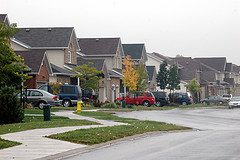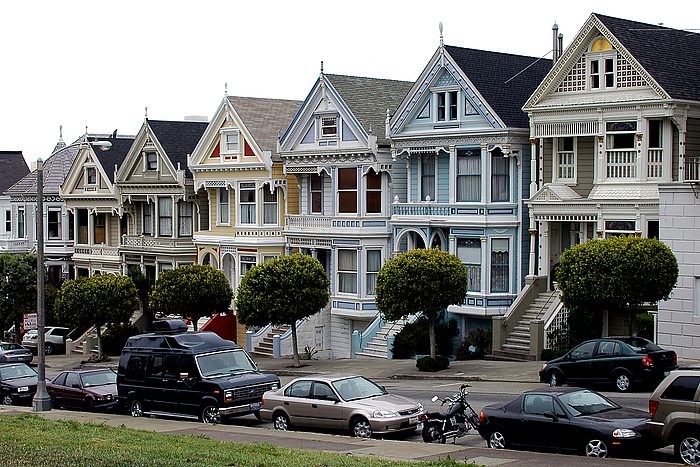
Neighborhoods that people like to think of as opportunity neighborhoods are much better understood as “advantage” neighborhoods. What is the distinction and why is it important?
Let’s begin with dictionary definitions. The Oxford dictionary defines opportunity as, “a good chance, a favorable occasion.” It defines advantage as, “a benefit, profit . . . superiority in a particular respect.” The distinction between the two, then, is in the difference between a chance and an actual benefit. Related to neighborhoods, the distinction is between a place that enhances the possibility of beneficial outcomes versus a place that directly bestows those outcomes.
There are two reasons why this is important. The first is that the notion of a place of opportunity suggests that those who are benefitting from living there are actively pursuing those opportunities, actively converting these possibilities into realities. It is, at its base, a meritocratic argument. In this formulation the place is simply the location of better chances and it is up to households to turn them toward their own favor. Families living in opportunity neighborhoods— those who are gaining wealth through the appreciation of their real estate capital and whose children are thriving in well-endowed schools—are seen as actively translating opportunity into real benefits through their actions.
But, of course, this is not what really happens. Instead, the households that occupy favored neighborhoods most often just passively benefit from advantage. They benefit from low crime rates and greater police responsiveness simply by existing in those places. There are no special steps they take to benefit from the advantages of these neighborhoods. Households in favored neighborhoods benefit from an absence of environmental hazards, but they do nothing that residents of low opportunity neighborhoods do not also do. Their children benefit from schools that are well resourced, while households in low-opportunity neighborhoods are at a disadvantage because the public schools they send their children to are often inferior. Households in favored neighborhoods benefit from property values that steadily rise, while residents of low-opportunity neighborhoods see no wealth generation from their homeownership.
The second problem with confusing “opportunity” with “advantage” in the context of neighborhoods is that doing so effectively dismisses the ongoing constraints of racism and discrimination that are so important in determining life chances in the United States. Yes, the opportunity paradigm may acknowledge that racism has contributed to the creation of the “geography of opportunity,” but the paradigm is oddly silent on the continued operation of racism and discrimination once that geography is in place. The assumption of the paradigm is that a move to such neighborhoods will produce benefits as people simply tap into and capitalize on all of the opportunity swirling about them. This is important because there is evidence indicating that not all people thrive in these so-called opportunity neighborhoods. Though one would expect, utilizing the opportunity-neighborhood logic, to find neighborhoods where young Black males would be able to thrive, one leading researcher on this question has concluded that, “there are essentially no such neighborhoods in America.” Another recent study finds that housing and employment inequities are not driven by “neighborhood factors but rather by the lack of a ladder in labor and housing markets.” It turns out the opportunity neighborhoods aren’t really an opportunity for everyone, and that racism and the constraints of discrimination follow people no matter their neighborhoods.
Or, to put it another way, white supremacy is not a meritocratic system.
By confusing opportunity with advantage, the opportunity paradigm elevates place as the critical determinant of upward mobility in a way that is independent of the ongoing constraints of race. In doing so, it misstates the most fundamental obstacle to economic equity in this country, our deeply embedded system of racial advantage and oppression.
The opportunity paradigm has the fundamental relationship reversed. The model suggests that people should follow opportunity, rather than acknowledge that the opposite is actually what happens: opportunity (or, as I argue, advantage) follows people. That is, it follows certain people. White and affluent people do not move in order to occupy favored neighborhoods. Those neighborhoods are favored because the inhabitants are white and affluent. All one needs to do is look at how previously favored places lose their “opportunity” when they lose their white residents (both central city neighborhoods and first ring suburbs come to mind).
Or, one can look at the care with which the Gautreaux program, for example, limited the number of mobility program participants moving into any given neighborhood. The program was acknowledging the fundamental dynamic that neighborhoods cease to hold their advantages if too many lower-income, African-American public housing residents move in and too many white people move out. So-called “opportunity” neighborhoods cease to exist in such circumstances.
Thinking of these places as advantage neighborhoods, on the other hand, more accurately depicts the real dynamics going on in a racist society. Given what history tells us about how our metropolitan areas were formed (think racially restrictive deeds, racial zoning, widespread white violence to create and maintain segregation, exclusionary zoning, Sundown Towns, etc.), a preoccupation with how place determines life outcomes is a bit of a diversion, and a housing policy organized around moving to opportunity misapplies lessons of American history. Neighborhood advantage does not exist in independently of white supremacy, it exists largely as a result.






This article recognizes that each individual person must take some action to secure some of the “advantages” no matter where they live at the time. But getting them to “believe” in themselves is at issue. If they have been surrounded with unbelief and negative role models it is very tough. I believe that even in some “disadvantaged” schools there are role models (i.e. teachers, staff, parents, maybe even the janitor) who demonstrate and instruct by word and personal example that a large part of the next step up is within the individual. In the words of someone I respect, “it takes mind renewal”. I hope that the workers at service providers and support agencies look for ways to foster that renewal inside each person they serve and start looking for success in not how many got a handout but how many a making steps upwards.
Well said. Thanks
Thank you for articulating the whole problem with the opportunity neighborhood paradigm, which I have been feeling for some time. To me it seems like an excuse to NOT invest directly in low-income communities of color, to ignore the existing strengths and assets in those communities, and to make a shallow and racist argument that living around more rich white people will by some strange osmosis lift up everyone else. As you say, the evil does not inhere in the place but in the racist system that strips places of both opportunity and advantage because they are home to immigrants, people of color, and poor people.
While the article points out the true foundations of white housing wealth, still, mostly uninformed home buyers bid up the value of “opportunity” neighborhoods. This Urban Growth system has been entrenched in the American housing situation for decades. Housing values, retirement wealth and pension systems are locked into this system. We may talk all we want about it (I am white) but to untangle it will bring on a NIMBYism like never seen before. The white “social contract” is now an unspoken value system.